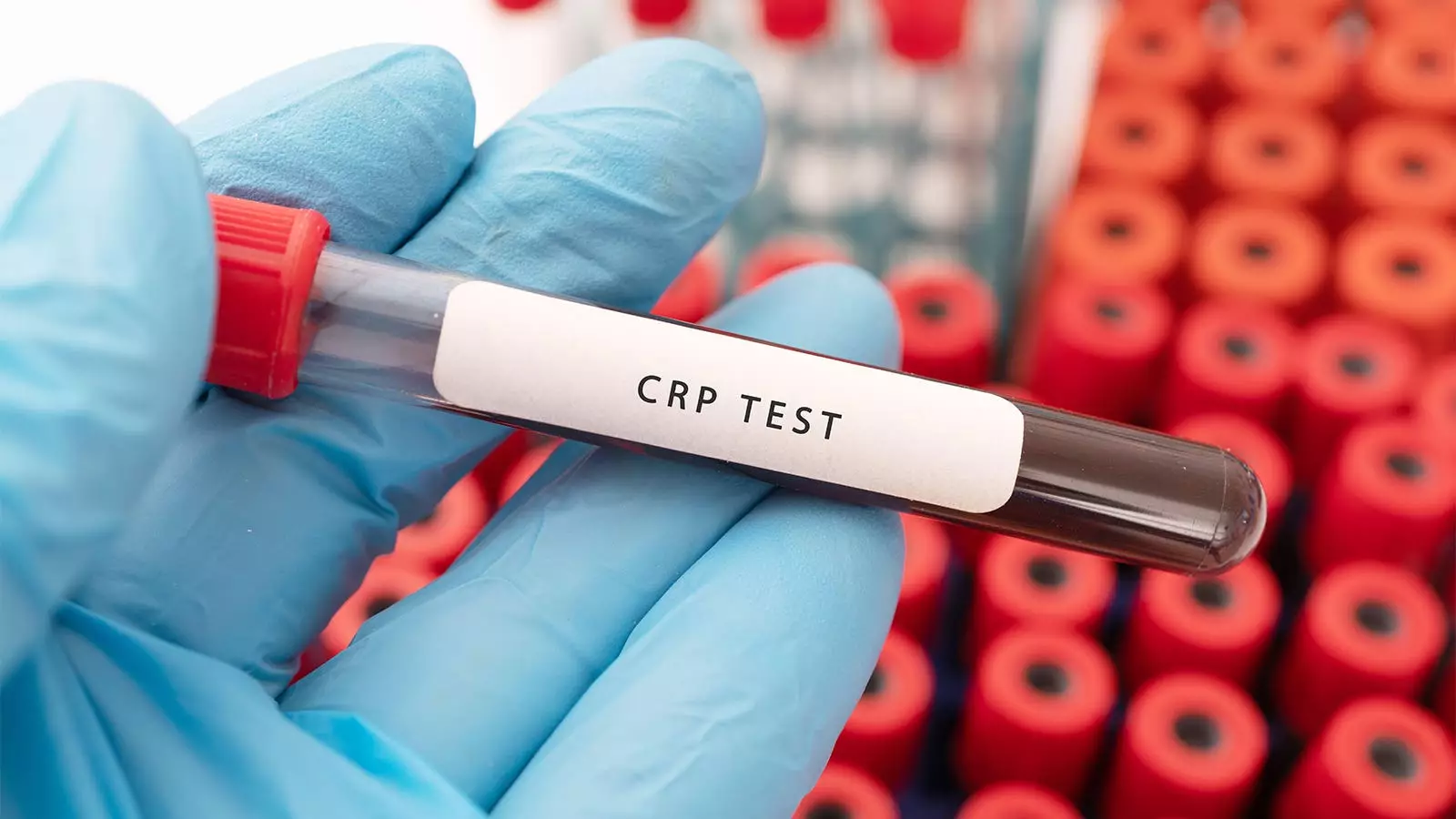Hidradenitis suppurativa (HS) is a chronic, debilitating skin condition characterized by painful nodules and abscesses. Recent analyses from the PIONEER I and II trials reveal the predictive role of C-reactive protein (CRP), a systemic inflammatory marker, on the response to adalimumab (Humira) in HS patients. These findings could reshape how healthcare providers approach treatment for this complex condition.
C-reactive protein serves as a biomarker for systemic inflammation and has been linked to various conditions, including obesity. In the context of HS, which often coexists with systemic inflammatory states, elevated CRP levels could signify a more severe disease burden. A recent study led by Dr. Alexa B. Kimball highlights that patients with elevated baseline CRP values (>0.30 mg/dL) demonstrated a significantly reduced likelihood of achieving a clinical response to adalimumab. Specifically, those with heightened CRP exhibited an odds ratio (OR) of 0.53, indicating that the probability of an effective response to the medication was markedly diminished.
Conversely, despite a baseline elevation in CRP, patients still experienced better odds of response relative to placebo—a reflection of the drug’s efficacy across a spectrum of inflammatory load. The study illuminated a concerning trend where each unit increase in CRP was associated with a gradual decline in the likelihood of a clinical response. This nuanced understanding points to a complex interplay between inflammation and treatment effectiveness, suggesting that clinicians may need to consider CRP levels when strategizing treatment plans.
Implications for Clinical Practice
The findings from the analysis raise important questions about treatment protocols for HS. While elevated CRP can indicate poorer outcomes with adalimumab, it also nudges healthcare providers toward identifying alternative strategies for managing patients who may not respond favorably to traditional doses of biologic agents. Dr. Danilo C. Del Campo, a commentator on the study, expressed hesitancy in making CRP a deciding factor in treatment initiation. He emphasized a more standardized approach, advocating for the FDA-approved dosing of adalimumab without prior adjustment for CRP levels or body mass index (BMI).
Nevertheless, the clear correlation between CRP, disease severity, and systemic inflammation suggests that further exploration might be warranted. As these biomarkers become more integrated into clinical guidelines, personalized treatment approaches could emerge, allowing for tailored dosing strategies and more informed discussions with patients about their expected outcomes.
Limitations and Future Directions
Despite its insights, the analysis does not come without limitations. The post hoc nature of the study implies that while the results are compelling, they were not part of the original trial design. Furthermore, the study demonstrated a skewed demographic representation, with only 13% of participants identifying as Black, despite HS disproportionately affecting this group. This raises concerns regarding the generalizability of the findings across diverse populations.
The researchers called for prospective studies to determine more definitively the thresholds at which CRP becomes a reliable predictor of adalimumab response. Such research could delineate the complexities of HS treatment further and guide clinicians when considering alternative therapies, including weight-based dosing protocols, drug level assessments, or even switching to different biologics from the outset.
In tandem with pharmacological strategies, holistic approaches may also play a role in managing HS. Dr. Steve Daveluy noted the potential benefit of combining biologics with adjunctive therapies such as spironolactone or finasteride, especially in female patients, and other treatments like metformin or zinc gluconate to address associated conditions such as obesity.
The emphasis on CRP and broader systemic health indicators reflects a growing recognition that treating HS goes beyond targeting skin lesions. Clinicians may need to adopt a more integrated perspective, considering the overall health and inflammatory status of their patients.
The emerging role of C-reactive protein as a predictor for adalimumab efficacy in hidradenitis suppurativa presents an intriguing frontier in dermatological treatment. As research evolves, it may be possible to refine management strategies for HS to achieve better clinical outcomes. This shift could empower clinicians with more precise tools to navigate the complexities of treating a condition plagued by inconsistent responses to established therapies. As the medical community continues to unravel the connections between inflammation, disease severity, and patient response, there lies an opportunity for enhanced personalized care that addresses not just HS symptoms but also the holistic health of each patient.

